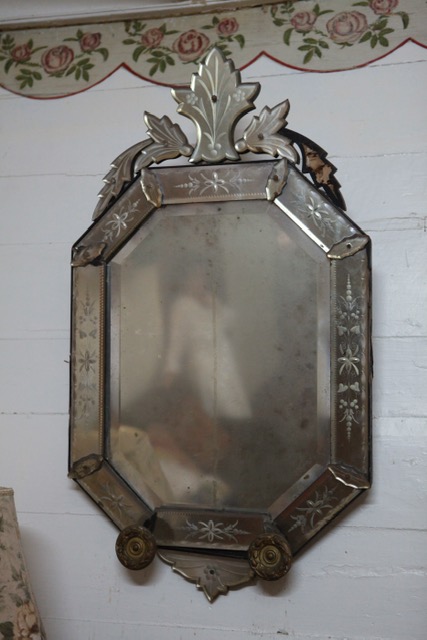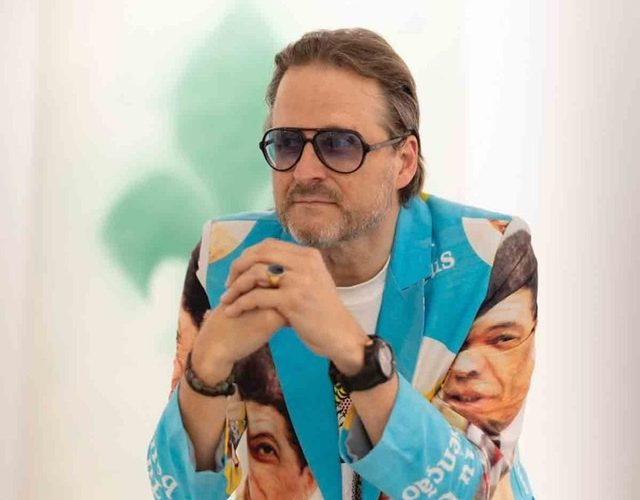In anticipation of “Art Geneve 2020” Art fair, artdecision’s Irina Vernichenko offers an interview with David Brolliet, an art collector from Geneva. David Brolliet talks about art collector’s role in contemporary society.
Irina: When you collect art do you attribute meanings to art pieces in your collection?
David Broillet: I buy only after having met the artist and talked to him for quite a bit of time, after I have understood what is the political and social meaning of this piece of art. That’s how it functions.
IV: Are you concerned with the meaning that the artist attributes to his works?
DB: It is very important to me. I never buy a piece from an artist that I have never met, and I have been collecting for over 40 years. The only exception was Cindy Sherman; I bought a piece from her without meeting her. It was in the 80s and it was still very affordable. Since then I went to New York, where I personally met Cindy Sherman.
I do not want to collect art pieces only because they are well-known; like a blue chip in the stock exchange. For me, Cindy Sherman is as valuable as other artists though their prices differ. I do not buy according to the trend of the market, I buy with my heart, “un coup de coeur”.
It is very important to talk with the artist in order to understand where the artist came from. Did he go to an art school or was he independent, and took a decision one day to become an artist? I am interested in the human being. I am interested in Art, and art is done by people. I just collect art, but I do things that are art: I collect, I share, I support.

Pascale Marthine Tayou, “Poupée Pascale”, 2014, crystal, mixed media © Pascale Marthine Tayou, Collection David H. Brolliet, Geneva
IV: Can you tell our readers about the works of Cindy Sherman that you have in your collection?
DB: My collection has 800 art pieces, Cindy Sherman is from the early part of the collection. I had many works by Cindy, but I sold some of them in order to keep collecting and enriching the collection with different artists. I kept only one.
IV: Do you regret selling Cindy Sherman’s art works?
DB: I discover new artists, help these artists build their career. I kept on discovering new artists.
Cindy Sherman’s piece from my collection is from 1994, it is the fifth edition out of six in total. It is big: 172 x 109 cm, from her series “The Witch”. Cindy wears an ugly mask and is shown to have three identities. I like it; it represents the human life, when we have double or triple identities.
It is not an easy piece to appreciate, it is not still, nor is it black and white, she is also not shown to be beautiful with makeup.
I collect art because art talks to me, art has to mean something to me, and usually I do not collect easy works.
IV: Do you collect punk art?
DB: I am not going that far. I like political art, I like women expressing their feelings about their life, if they are happy or unhappy. Inequality between men and women around the world, unfairness between men and women, sociologically, the women’s place in society acting as a mother .. – I did not say punk.
I have Nan Goldin, Larry Clark, because their works represent certain periods.
IV:You said that this work expresses certain periods, what do you think about history?
DB: I give you an example Mounir Fatmi’s “NADA”, it’s going to Dakar (to an exhibition at Musée des Civilisations Noires ) and Kader Attia – their art has references to history. The basis of their work is history. They take some parts of history and try to criticize, correct them. They start with the war, when Africa was colonized, they say it is not fair. They sublime it in their work. They want to say that contemporary African art is very important because it has its own roots.
When I started collecting I didn’t pay too much attention to this, although I am fascinated by history, my major at university was political science and diplomacy. You need to know history to see the world as it is, to understand the population and the different religions.
Mounir Fatmi is an Arab artist, I show now his wonderful pieces at the exhibition of Collection Lambert in Avignon; two skateboards with a praying carpet, it is fantastic, it means that religion is free: you can be religious, but you do not have to go to extremes.
Artists play a very important role in the world today, they can say things and address sociological issues that are not supposed to be politically correct. There is no political correctness today, there is no tolerance. Many people today have radical, even extreme views.
Irina: What is the most dynamic art work in your collection?
DB: The gesture of art for me is very dynamic, it’s an expression. Dynamism and humor, humor and message, for me it is art. For me creation is dynamism, not static, though there is minimal art, which can be static. But I am not interested anymore in minimal art, this new decade I am interested in dynamic art that questions me. Sculptures for instance, and some videos as well.

EXHIBITIONS
What are your plans? Show your collection to the public again or is it now private?
DB: For me, it is not a private collection. I share and I lend my pieces as much and as often as I can: my pieces are going all around the world. Works are going on now: at the Collection Lambert in Avignon, there is the Triennale of collectors (ADIAF), where four of my works are exhibited: Barthelemy Toguo, Pascale Marthine Tayou, Mounir Fatmi, all African artists!
To share my collection there is no restrictions. In 2018, we showed about 150 pieces at the Fondation Fernet-Branca we did the exhibition in only four months, usually it takes a year to prepare, organize, to do museography, to decide which piece goes where. Two curators picked their favorites and made the show ! An amazing achievement that you can see on the link : https://www.teapot-creation.com/360/Fernet-Branca/David_Brolliet/Index.html
I collect everything, all media: installations, sculpture, painting, I have more than one hundred videos in my collection.

What do you think of feminist art?
DB: Women had to address and fight in the 20th century to be seen, now we have more women artists. I collect many women artists like Ghada Amer, Morgane Tschiember, Vanessa Beecroft, Iris Levasseur, Prune Nourry, Sylvie Fleury, Erika Verzutti and Yoko Ono. I do not pay attention, whether the artist is male or female. I go to see the show, I meet the artist, I discuss, I talk, my heart beats strongly and then I buy if the work is available and affordable.
What are your impressions of Biennale de Lyon 2019?
DB: I loved it, there was a lot of international artists, not only French. Lyon has an important role to play in the French contemporary art because of the Biennale. I loved this choice of venue – “Fagor”, the former washing machine company.
The show was very good, the pieces were very good quality in a very special way; the architecture of the building was unusual, but for me it was fantastic to see the art pieces being in fusion in this space. There were no white walls, no separation, there were no arrows, no set order: it was not clear what room to see first; room number one or room three, etc. You had to imagine, and feel Biennale, which I really loved.
Musée d’Art Contemporain de Lyon (MAC) always does interesting things.
There were also French artists Dewar et Gicquel that are in my collection, they both received the Prix Marcel Duchamp, that I support as a member of ADIAF.
IV: Have you ever lost a piece from your collection?
DB: Unfortunately, I did: we conducted deals with dealers by shaking hands. It was trust. But one of those deals fell through, the head of one gallery in New York died, and I couldn’t find receipts and I lost pieces. It’s a good lesson for me.
IV: Is it “easier” to collect contemporary art as compared with old master’s art in terms of provenance research, etc?”
DB: It is easier, because we have access to artists through the internet, you can always ask the artist for the work’s certificate. I do not buy today without the artist’s certificate.
IV: Do you have any Geneva artists in your collection?
DB: Yes, of course: John Armleder, he is not just an artist in my collection, he is a friend, I gave his work to the Mamco museum as a gift. Other Geneva artists are: Olivier Mosset, Sylvie Fleury, as well as artists of new generation: Denis Savary, Maya Rochat from Lausanne, the young artist’s art is about respecting the planet.
I supported the funding Catalogue of Geneva artists. I have been collecting artists from Geneva, as Stephane Ducret, Thierry Feuz. I also collect Swiss artists from elsewhere like Ugo Rondinone, Thomas Hirschorn and Urs Luthi.


Comments